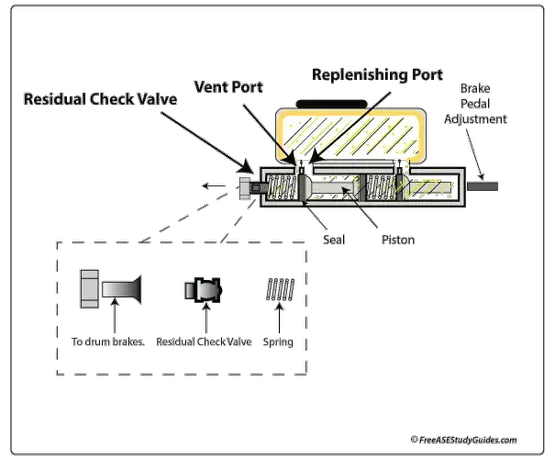Jack Klarich
18000+ Posts
Not sure about the residual valve thing. What and where would it be!
If your rear brakes were ever drum brakes you would have had a residual check valve.
Many master cylinders had them built in to the end of the master cylinder where the line goes in. Some had a nut @the end of the master cylinder where the brake line screws in. Behind the nut was the valve and spring. See this picture for an idea about the valve








